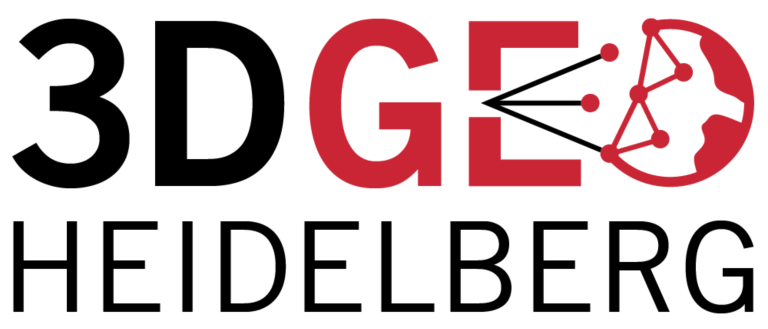Category: Publications
-
Trace element partitioning in fluvial tufa reveals variable portions of biologically influenced calcite precipitation
Freshwater tufas are widespread phenomena in karst environments denoting important terrestrial paleo-environmental and paleoclimate archives. Additionally, many tufa sites are UNESCO world natural heritages, which emphasizes their societal importance (e.g. Jiuzhaigou, China; Plitvice, Croatia) and the demand for comprehensive conservation and monitoring strategies. Formation of tufas is controlled by numerous factors. The latest publication –…
-
Enrichment of OpenStreetMap Data Completeness with Sidewalk Geometries for Wheelchair Routing
Tailored routing and navigation services utilized by wheelchair users (such as provided by OpenRouteService.org ) require certain information about sidewalk geometries and their attributes to execute efficiently. Except some minor regions/cities, such detailed information is often not sufficiently present in current versions of crowdsourced mapping databases including OpenStreetMap. In a recent study (1) we aim…
-
CFP: ISPRS IJGI Special Issue “Volunteered Geographic Information: AnaLysis, Integration, Vision, Engagement (VGI-ALIVE)”
Call for Papers: ISPRS IJGI Special Issue “Volunteered Geographic Information: AnaLysis, Integration, Vision, Engagement (VGI-ALIVE)” A special issue of ISPRS International Journal of Geo-Information (ISSN 2220-9964). Deadline for manuscript submissions: 30 November 2018 The steady rise of data volume shared on already-established and new Volunteered Geographic Information (VGI) and social media platforms calls for advanced analysis methods…
-
CFP: VGI-ALIVE Workshop at AGILE 2018, Lund, Sweden
VGI-ALIVE – AnaLysis, Integration, Vision, Engagement Tuesday 12th June 2018, Lund, Sweden, Workshop at AGILE 2018 Introduction to the VGI-ALIVE Workshop The steady rise of data volume shared on already established and new Volunteered Geographic Information (VGI) and social media platforms calls for advanced analysis methods of user contribution patterns, leads to continued challenges in data fusion, and…
-
Highly Cited Paper in Geosciences: Eitel, Höfle et al. (2016)
Point clouds and our 3DGeo research in Heidelberg are going beyond 3D, such as the new research project Auto3Dscapes. A detailed analysis of this research frontier has been published in Eitel, Höfle et al. (2016): Beyond 3-D: The new spectrum of lidar applications for earth and ecological sciences. The paper has just become a highly…
-
OSMlanduse.org + Remote Sensing = New conterminous land use data set for Germany released – filling gaps in OSM through machine learning
Land use data created by humans (OSM) was fused with satellite remote sensing data, resulting in a conterminous land use data set without gaps. The first version is now available for all Germany at OSMlanduse.org. When human input (OSM data) was absent a machine generated missing land use information learning from human inputs and using…
-
Context-Based Classification of Urban Blocks According to Their Built-up Structure
A recently published paper presents an approach for classifying urban blocks according to their built-up structure based on high-resolution spaceborne InSAR images. Most attributes considered in the classification describe the geometric structure and spatial disposition of the polygon and line features extracted from each block. The feature extraction is carried out on two intensity images…
-
Deep Learning with Satellite Images and Volunteered Geographic Information
Recently, deep learning has been widely applied in pattern recognition with satellite images. Deep learning techniques like Convolutional Neural Network and Deep Belief Network have shown outstanding performance in detecting ground objects like buildings and roads, and the learnt deep features are further applied in some prediction tasks like poverty and population mapping. On the…
-
GIS @ ISCRAM – Call for SHORT PAPERS – DL: Jan 21
15th International Conference on Information Systems for Crisis Response and Management (ISCRAM 2018) May 20-23, 2018, Rochester, NY, USA https://iscram2018.rit.edu/submissions Track: Geospatial Technologies and Geographic Information Science for Crisis Management (GIS) https://iscram2018.rit.edu/sites/rit.edu.iscram2018/files/docs/ISCRAM_2018_track_GIS.pdf Deadline for paper submissions: December 10, 2017 Track Description With disasters and disaster management being an “inherently spatial” problem, geospatial information and technologies…
-
Digital Geoarchaeology: New Techniques for Interdisciplinary Human-Environmental Research
Digital Geoarchaeology can be regarded as an intersection of disciplines that contributes to the consolidation of different academic perspectives. It represents a novel approach in terms of computer scientific methods combined with geoscientific know-how and archaeological expertise to multi-methodically investigate past human-environmental relationships (Siart et al. 2018). In the new textbook “Digital Geoarchaeology” by Springer,…
-
Routing through open spaces – a performance comparison of algorithms
Finding the shortest path through open spaces is a well-known challenge for pedestrian routing engines. A common solution is routing on the open space boundary, which causes in most cases an unnecessarily long route. A possible alternative is to create a subgraph within the open space. In a recently published paper authors from GIScience Research…


